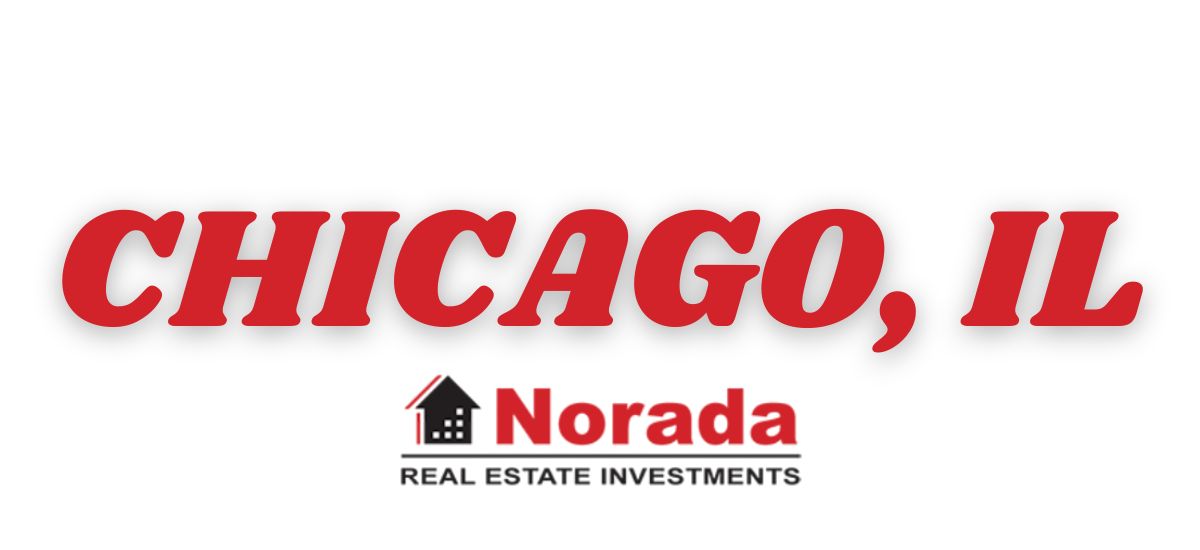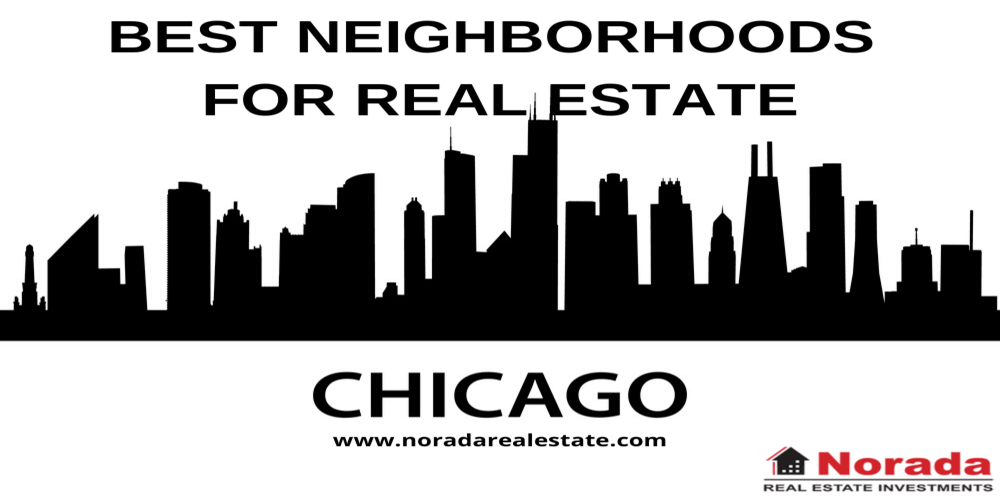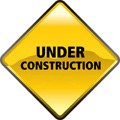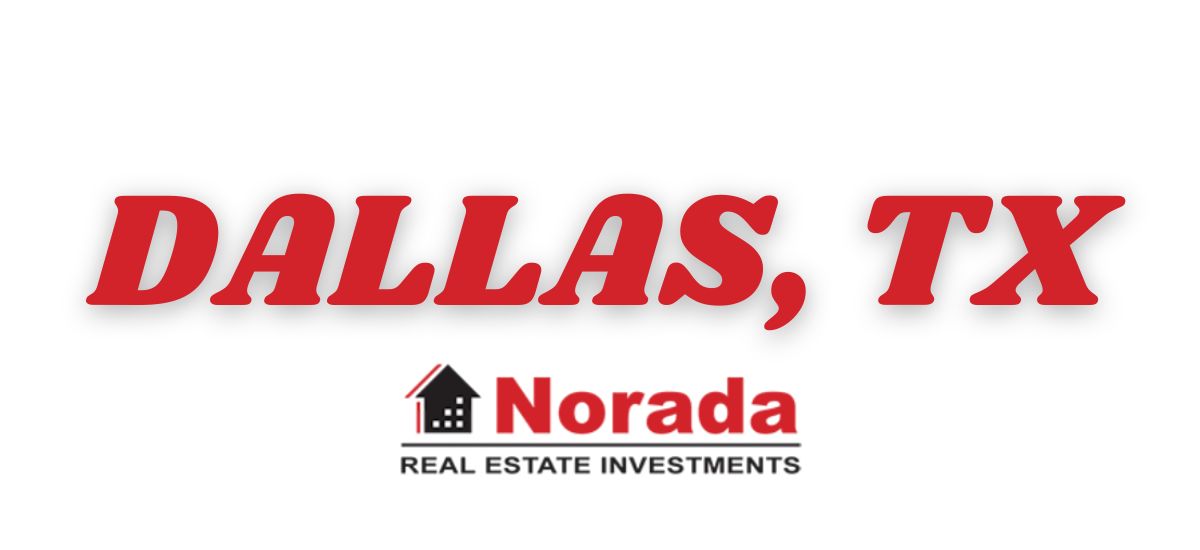Looking to invest in the Chicago real estate market? If you're wondering where should you buy Chicago investment properties, you'll find all the answers here, in one place. Chicago is one of the major cities in the U.S., where you can find affordable investment properties for sale. However, not every neighborhood in Chicago is desirable for residents, and many desirable neighborhoods are a poor choice for real estate investment.
On this page, you’ll learn about some of the best neighborhoods for buying Chicago investment properties. The average property in Chicago costs just over 345,000 dollars. According to Redfin, a real estate brokerage, the Chicago housing market is somewhat competitive. The average homes sell for about 1% below list price and go pending in around 56 days but hot properties can sell for about 2% above list price and go pending in around 34 days.
In March 2022, Chicago home prices were up 0.7% compared to last year, selling for a median price of $345K. On average, homes in Chicago sell after 59 days on the market compared to 36 days last year. There were 3,222 homes sold in March this year, up from 3,216 last year. Chicago properties come in at around 260 dollars a square foot; this value increased roughly nine percent year over year.
The average home in New York costs nearly a million dollars, while a cheap home in Los Angeles costs half a million dollars. This makes Chicago investment properties a relative bargain. The average rent for a one-bedroom apartment is roughly a thousand dollars. Two-bedroom apartments in Chicago cost an average of 1300 dollars a month. Chicago rents have increased by 1.65% compared to last month, and are up by 11.16% compared to last year. The average rent for a Chicago 1-bedroom apartment is $2,155 while the average rent for a 2-bedroom apartment is $2,771.
As of March 2022, the median home price in the Chicago Primary Metropolitan Statistical Area is $310,000, up 5.1% from March last year. e Chicago PMSA has yet to revert to their pre-Covid levels on average. In the Chicago PMSA, the March 2020 median sale price was $260,000 (in $2020) and $290,000 (in $2022); the comparable figure for price recovery in March 2022 is 107% after adjustment (119% before adjusting). The median price forecast presented by UIC SHDRE indicates positive annual growth for April, May, and June in both Illinois and the Chicago PMSA, according to a recent report released by Illinois Realtors®.
The median price in Chicago PMSA is predicted to increase by 10.3% in April, 8.8% in May, and 8.8% in June. As a complement to the median housing price index (HPI), the SHDRE HPI forecasts a positive growth trend for the Chicago PMSA. In Chicago PMSA, the SHDRE HPI (Jan 2008=1) is forecast to change by 10.3% in April, 8.8% in May, and 8.8% in June. SHDRE (Stuart Handler Department of Real Estate) HPI takes housing characteristics into account and constructs comparable “baskets” of homes for each month.
Realtor.com also predicts a positive annual appreciation albeit slower than last year. According to them, Chicago-Naperville-Elgin, Ill.-Ind.-Wis. median price will appreciate by only 1.9% over last year (by the end of 2022).
Table of Contents
Should You Invest In Chicago Investment Properties?
Chicago is on the UBS list of the world’s richest cities. It is often rated as having the most balanced economy in the United States. For those who wish to invest in Chicago investment properties, know that there are several neighborhoods in this city that present a great opportunity to investors.
This is true whether you want to cater to families searching for starter homes, growing families, or the general rental population. Strong economic and job growth makes Chicago an ideal place for real estate investment. It is home to 12 Fortune Global 500 companies and 17 Financial Times 500 companies, having the third-largest gross metropolitan product in the United States.
Chicago has high private sector employment leading to a strong rental market, with over 50% of the population of renters. The tourism and hospitality industries have added thousands of jobs, generating billions of dollars in direct spending by visitors. Chicago’s real estate market has been one of the slowest to recover since the housing bubble burst at the start of the Great Recession.
Home prices were 19% below their pre-crash levels in 2017, and they aren’t expected to hit peak values until 2021. Chicago is the 3rd largest metro, very densely populated with an abundance of small multifamily properties. It is also one of the most affordable metros to live in the entire nation. It has an incredibly deep pool of potential renters at all levels of the market.
It's is the only metro in the country where typical renters spend less than 20% of their annual income on housing. Many factors guarantee that they’re not going to turn into new home buyers any time soon. Many people prefer to rent in Chicago for career and financial flexibility, to save a down payment, and to avoid repair bills, real estate taxes, and real estate market risk.
It is a prime destination for investors who would like to buy Chicago investment properties where the ROI is going to be high and likely to improve over time. In the city of Chicago, there are approx. 77 neighborhoods where you can buy investment properties. There are about 15-20 which are potentially overvalued right now, depending on who you ask and the product type.
Intrinsic values for the rest of the neighborhoods may not even be close to reaching their full potential. Taxes are reasonable (excluding Downtown Chicago neighborhoods), rents are very high and there's a high demand for Chicago rental properties.
Mortgage interest and property taxes remain tax-deductible for many Chicago home buyers. Rent, however, is generally not tax-deductible. In addition to annual tax deductions, homeowners can often make money on the sale of their homes and take profits tax-free within certain limits. The price to rent ratio is also reasonable in Chicago.
Plus, home investors can buy on a huge margin, in some cases with just 3% to 5% down. That’s a good deal that can't found in other big markets like NYC and San Franciso. We chose to ignore the short-term impact of the ongoing pandemic on the Chicago real estate market. People need places to live. Those who wanted to downsize or move into a larger property will need to move forward with their plans once life returns to normal.
This is why we think it makes sense to assess the Chicago real estate investment using pre-pandemic numbers, which should be back in effect by the end of the year. Investors can make good money in this city by building a portfolio of Chicago investment properties and renting them out to a massive population of renters.
Best Places To Buy Chicago Investment Properties
With its low cost of living, relatively large housing inventory levels, and high affordability, Chicago has a large no. of renters. Therefore, buying investment properties in Chicago, and renting them out is an excellent choice for real estate investors. Here are the top neighborhoods in Chicago where you can buy investment properties.
1. Chicago's Rogers Park Neighborhood
You can find Chicago investment properties in Rogers Park. Rogers Park is an older neighborhood in Chicago which is dominated by pre-WW2 single-family homes and small multi-family apartment buildings. It is an affordable, walkable neighborhood. For example, the average home here costs around 220,000 dollars.
That makes it a relative bargain for those who want to invest in Chicago investment properties. While it is located 10 miles from downtown, the commute to Chicago's central business district is quick with many options. Public transportation is extensive with access to several bus and rail lines.
Rogers Park is also one of the most affordable areas in the city; that’s unusual given how close it is to the shore of Lake Michigan. Furthermore, they can gain access to many modern amenities in downtown Evanston. This is why Rogers Park's home values are increasing. The rental market is bolstered by the presence of Loyola University.
You’ll get high rental rates for Chicago investment properties near the ten beaches in the area, especially in the summer. With its extensive lakefront green space and unique street-end beaches, Rogers Park is a great place to live as well as invest in real estate.
2. Chicago's Logan Square Neighborhood
You can buy Chicago investment properties in Logan Square. Logan Square is a century-old neighborhood in downtown Chicago. It retains its tree-lined streets and classic Greystone buildings in addition to the massive Palmer Square green space. If you are looking for a good neighborhood to buy Chicago investment properties, know that the bungalows here are considered highly desirable by Millennials.
The area is gentrifying, though that’s true of the entire Northwest Side. This area has already seen decent appreciation, but it is notable for the very high rents. The average rental rate in this area is roughly two thousand dollars a month. Logan Square has been a hot neighborhood for real estate investment in Chicago for a long time.
Zillow ranked it one of the hottest real estate markets in Chicago in early 2020. The typical home now costs 500,075 dollars, up 6.5% over the past year. Studios cost 1300 to 1700 dollars a month, while two-bedroom apartments rent for 1600 to 2400 dollars. Three-bedroom apartments and homes can cost 2500 dollars a month to rent.
There are also opportunities for bargains for property buyers. For example, the higher property prices mean the average home in Logan Square sits on the market for around 100 days, and many buyers may accept a lower price tag to free them up to move or get them out from under their mortgage.
3. Chicago's Pilsen Neighborhood
You can buy Chicago investment properties in the Pilsen neighborhood. Pilsen is a great area for those who want a diverse portfolio of investment properties without having to run all over the city. Pilsen is located on Chicago’s Lower West Side. It features a mix of condos, apartment buildings, and single-family homes.
The area is suburban enough to attract families. Its schools are a C+, which is close to the Chicago average. Parks and other amenities explain why Niche.com gave the area a B- for families. For those who want to buy Chicago investment properties, the presence of the University of Illinois at Chicago is a point in its favor.
You can rent to students if you can’t find professional couples to rent a condo or apartment. Yet Pilsen seems to attract young adults who graduate from the university and move into local apartments. Others move here to work in the UIC Medical District. Another point in favor of the area is the L Pink Line’s three stops in the area, giving residents easy access to the rest of the city.
Pilsen properties can be among the most profitable Chicago real estate investments. The median rent is around 1600 dollars a month. The average property costs 300,000 dollars, a little less than the city average. You can find properties in need of rehabilitation for less than this.
Refurbish it to cater to students in search of Chicago rental properties or meet the expectations of picky Millennials, and you’ll see a significant return on the investment. If you convert a large classic home into several units, you could charge 900 to 1200 a month for a one-bedroom apartment or 1200 to 1300 dollars a month per studio apartment.
4. Chicago's Avondale Neighborhood
You can buy investment properties in Chicago's Avondale neighborhood. Avondale has started to gentrify as people get priced out of Logan Square, Wicker Park, and Bucktown. This is one of the more expensive middle-class areas to buy Chicago investment properties. The average home here costs around 400,000 dollars. However, many reports are suggesting the area will go even higher.
For example, the area is well serviced by the Blue Line ‘L' (24-hour rapid transit train service) and buses. And that’s aside from the easy access to I-90. If you don’t want to speculate in real estate, know that this family-friendly area still commands high rents, so you’ll see significant income from your investment property.
Avondale received a B from Niche.com for its family-friendliness, though the school district was rated a C. You can easily expect to see a significant appreciation of your investment property in this neighborhood. The area is in such demand that the price per square foot for Avondale homes is around 280 dollars a square foot, 40 dollars more than the average for Chicago investment properties.
This area does offer an excellent rental income. The average rent for a studio apartment is 1300 dollars a month. A two-bedroom apartment costs 1400 to 1900 dollars a month. A three-bedroom apartment or house costs up to 2000 dollars a month.
5. Chicago's Humboldt Park Neighborhood
Humboldt Park is another good neighborhood to buy investment properties in Chicago. The home prices in Humboldt Park peaked in 2006 but fell dramatically during the Great Recession. Home prices here hit a record low in 2012. Humboldt’s housing prices are on the rise again, though they remain below their 2006 peak.
The typical home value is around 379,417 dollars (ZHVI), while rents are around 1700 dollars a month. The area is notable for the number of foreclosed and distressed properties available to investors, and this helps pull the average rental rate down. This is why neighborhood rents could rise a little higher before they hit the Chicago average of 1700 to 1800 dollars a month.
Another option is breaking up a large home into several smaller units. You’d receive 1700 to 1800 dollars for a one decent bedroom apartment. A two-bedroom apartment could rent for up to 2000 dollars a month. Humboldt offers a variety of housing types for those who want to buy Chicago investment properties.
You can find single-family homes and fairly large apartment buildings. Housing is expensive enough to preclude many residents from buying. The schools rate a C+, though the area’s crime is average for the city. The area received a grade of B- from Niche.com for family friendliness. Buses connect the neighborhood to the rest of the city. The area is notable for being biker friendly.
6. Chicago's West Town Neighborhood
You can buy investment properties in Chicago's West Town neighborhood. West Town has several points in its favor for Chicago real estate investment. It has low crime by Chicago standards. It is a walkable community. It offers great amenities. West Town has a suburban feel. The schools are average for Chicago, but crime and safety are slightly better than average. Yet homes are so expensive that many would-be buyers are forced to rent.
The only downside for those considering investing in Chicago properties is the price tag. The average home here costs around half a million dollars. This may be offset by the 2400 dollar a month median rental rate. You may be able to get a discount on these potential Chicago investment properties. For example, the average home sits on the market for four or more months.
Chicago Turnkey Investment Properties For Sale
Are you looking for a turnkey investment property in Chicago? NORADA REAL ESTATE INVESTMENTS has extensive experience investing in turnkey real estate and cash-flow properties. We strive to set the standard for our industry and inspire others by raising the bar on providing exceptional real estate investment opportunities in Chicago and many other growth markets in the United States.
We can help you succeed by minimizing risk and maximizing the profitability of your investment property in Chicago. Consult with one of the investment counselors who can help build you a custom portfolio of Chicago turnkey investment properties in some of the best neighborhoods.
All you have to do is fill up this form and schedule a consultation at your convenience. We’re standing by to help you take the guesswork out of real estate investing. By researching and structuring complete Chicago turnkey real estate investments, we help you succeed by minimizing risk and maximizing profitability.
Buying or selling real estate, for a majority of investors, is one of the most important decisions they will make. Choosing a real estate professional/counselor continues to be a vital part of this process. They are well-informed about critical factors that affect your specific market areas, such as changes in market conditions, market forecasts, consumer attitudes, best locations, timing, and interest rates.
References:
- About the Chicago real estate market
https://www.redfin.com/city/29470/IL/Chicago/housing-market
https://chicago.curbed.com/2020/3/9/21171723/chicago-real-estate-coronavirus-home-buying
https://www.mashvisor.com/blog/chicago-real-estate-market-2019-neighborhoods https://www.biggerpockets.com/forums/311/topics/531073-is-investing-in-chicago-brilliant-or-ridiculousgo https://www.bestchicagoproperties.com/blog/five-reasons-to-buy-rather-than-rent-in-chicago/ - Best Chicago Neighborhoods
https://en.wikipedia.org/wiki/Logan_Square,_Chicago
https://www.zillow.com/logan-square-chicago-il/home-values/
https://www.niche.com/places-to-live/n/lower-west-side-chicago-il/
https://www.domu.com/chicago/neighborhoods/pilsen
https://www.zillow.com/avondale-chicago-il/home-values/
https://www.domu.com/chicago/neighborhoods/avondale
https://www.niche.com/places-to-live/n/humboldt-park-chicago-il/
https://www.zillow.com/humboldt-park-chicago-il/home-values/
https://www.domu.com/chicago/neighborhoods/humboldt-park
https://www.zillow.com/west-town-chicago-il/home-values/
https://www.niche.com/places-to-live/n/west-town-chicago-il/
https://www.rentcafe.com/blog/cities/rogers-park-chicago-neighborhood-guide/
https://chicago.curbed.com/2019/6/4/18646462/chicago-best-neighborhood-homes-buy-rent
https://homevestorsfranchise.com/the-best-chicago-neighborhoods-for-real-estate-investing-slp/






